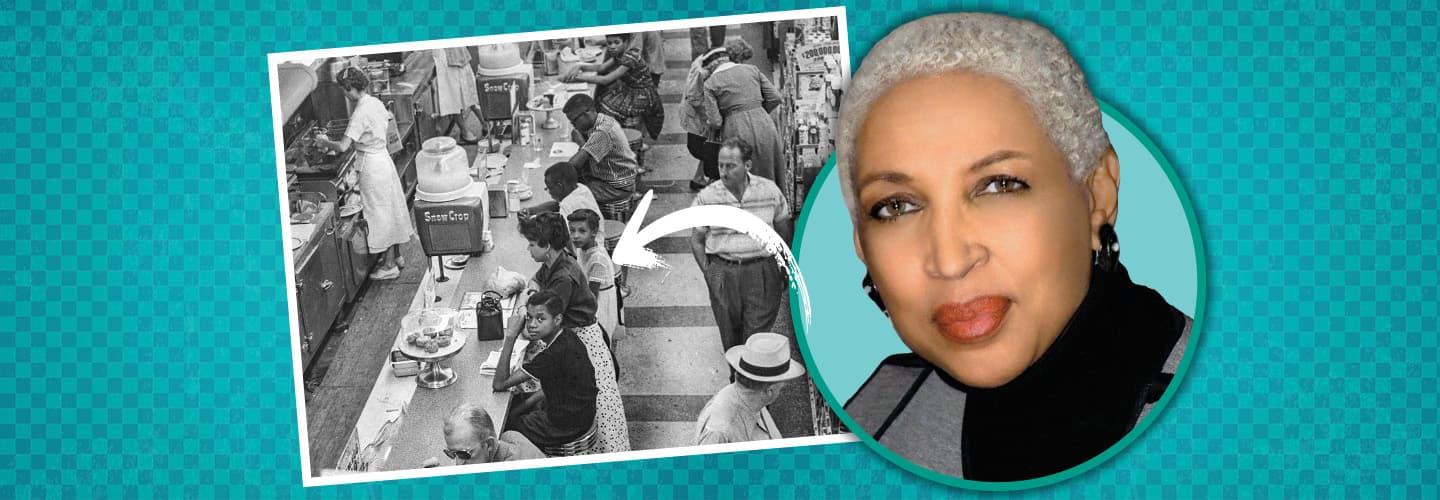On a hot August day in 1958, 7-year-old Ayanna Najuma and about a dozen other kids walked into the Katz Drug Store in Oklahoma City, Oklahoma. They sat down at the lunch counter and tried to order, but the waitresses ignored them. The kids sat there for hours. No one would serve them for one reason: They were Black.
The restaurant was one of many in the city that refused to serve Black people at the time. Ayanna and the other kids knew they wouldn’t be served. But they weren’t there to eat. They were taking a stand against injustice. They wanted to end segregation—the forced separation of people based on their skin color. The kids, who ranged in age from 6 to 17, were holding a type of protest called a sit-in.
“We said to each other, ‘We want a change. Why wait? Let’s do it now,’” Ayanna recalls.
It was a hot August day in 1958. Seven-year-old Ayanna Najuma walked into the Katz Drug Store in Oklahoma City, Oklahoma. She was with a dozen other kids. They sat down at the lunch counter and tried to order. The waitresses ignored them. The kids sat there for hours. No one would serve them for one reason. They were Black.
Many restaurants in the city refused to serve Black people at the time. Katz Drug Store was one of them. Ayanna and the other kids knew they wouldn’t be served. But they weren’t there to eat. They were taking a stand against injustice. They wanted to end segregation. That is the forced separation of people based on their skin color. The kids ranged in age from 6 to 17. They were holding a type of protest called a sit-in.
“We said to each other, ‘We want a change. Why wait? Let’s do it now,’” Ayanna recalls.

